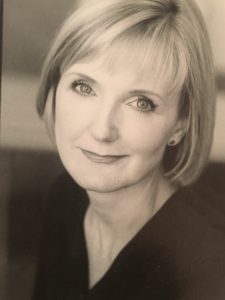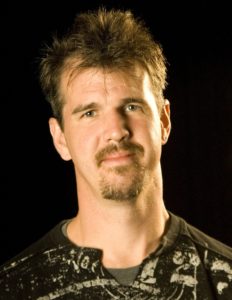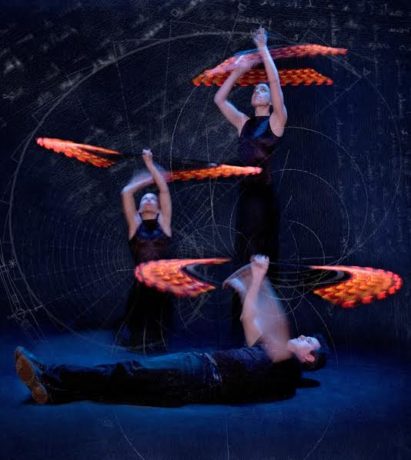Three annual Fringe favorites have chosen to remount a past hit for this year’s festival, giving audiences a chance to see the acclaimed works they missed, or to revisit the shows they loved. I had the opportunity to discuss the new 2016 Philadelphia Fringe Festival productions of Spherus with Innovative Juggler Greg Kennedy, Antihero with Tribe of Fools’ Terry Brennan, and Eugène Ionesco’s The Chairs with Tina Brock from the Idiopathic Ridiculopathy Consortium, to get their insights into the popular productions and their specific reasons for presenting them again.
DEB: Why did you decide to remount a past work for this year’s Fringe? .

TERRY: I think we have a very good reason: the world feels a lot more violent now than it did in 2013, when we premiered Antihero. At the time when we first decided to remount it, during the primary elections, Trump wasn’t really a motivation for doing it. But since then, the language of violence and bigotry has become so rampant in mainstream culture and politics; it’s almost doubled, or tripled. I see that kind of escalation in so many more places now than ever before, so we wanted to make that point again with the show.

TINA: In 2009, The Chairs was the IRC’s first production in a venue outside of L’Etage Cabaret, where we began in 2007. We only did seven shows at Society Hill Playhouse, and the run sold out within a very short time of its opening. This year the IRC marks its tenth anniversary, and it seemed appropriate to celebrate with a remount of a show many people still point to as one of their favorites. The themes in the play, while always timely, seemed particularly so this year; it’s hard to listen to the news and not feel some sense of Ionesco’s focus on the lack of communication and the inability of language to express certain states of being and ideas.

GREG: I wrote Spherus four or five years before I left to tour with Cirque du Soleil; it was designed to be glowing with light. But now technology has improved, so I felt it was time for an update. I sat down with my assistants and used some of the 3D mapping that had since been developed, to create a set that would match each scene. We now have very specific lighting from video projections that complement and interact with the performance. For example, in one scene we have white cardboard boxes, and with the new software, we can do three projections at once, in tandem. Other projections include the image of Leonardo da Vinci’s Vitruvian Man and willow trees blowing in the wind, which give the show a very organic feel. Every year, around February, I start thinking about the Fringe and what to do, so with the new tools that are available, I felt that this was a good time to bring back Spherus.
What about the show is indicative of your signature style?

TERRY: Antihero is filled with heightened physicality, and at Tribe of Fools over the past five years, we’ve focused on how to tell a story through movement and gesture, with parkour, acrobatics, and stunts. This production is the most acrobatic-heavy of all the shows we’ve done, with twists, jumps, and flying through the air! We have stylized fight scenes: some of the gestures are threatening, and some are not; some of the fights are real confrontations between the characters, and some take place only in their minds. The tone is almost like an action movie or a video game. We poke fun at the casualness of the violence, while making a relevant statement about the brutality we all see on a regular basis.

TINA: All the elements of an absurdist IRC production are consistent with and present in The Chairs! There is the humor, which is absolutely necessary in everything; its absence would be the downfall of the show, of one that does not resonate. There is clarity in the language, in making sense out of what, to many, seems like nonsensical dialogue. Some of the language is an attempt to show the disintegration of language and the banality of our conversations, and some sections use language as an emotional barometer. Instead of moaning, or screaming, or crying, the action is the use of language in a different form, to exchange emotional content. The characters are loud, they are overwrought, they are acting– this is what must be present to create the ridiculous world of the play. The design, too—thoughtfully executed by Lisi Stoessel, Erica Hoelscher, and Robin Stamey—are greatly accentuated to heighten the point and the experience. We are grounded in reality and then pushed that extra length, not to be silly, not to be broad, not for the sake of trying to be funny, but to bring out the underlying sadness and deep ennui that drives the reason for the play, and for absurdist theater in general, to which IRC is dedicated. Without setting those elements correctly, the audience is led to believe that they are experiencing psychological realism. This play is not that, and Theater of the Absurd is not that, and IRC is not that!

GREG: Spherus presents a very modern form of juggling based on engineering. I used to be an engineer (I took five months off from my job in the 1990s, and never went back!), but I took the knowledge from my background to create a blend of science with art. The show includes structural geometric shapes, including two dancers– Rachel Lancaster and Christine Morano—manipulating a giant helix in space, with beautiful light and changing colors. I use engineering and the latest technology to highlight the performances more in all of my shows, and specifically for this one, the advanced 3D video mapping software and projections.
What’s your favorite memory from your previous production?
TERRY: In the second–to-last scene–the last big group scene–the character of a twelve-year-old boy who got kicked out of the comic book store comes back and tells everyone that he found the ultimate superhero of the universe, Aquaman. Tim Popp improvised, and it was a genius moment! I wrote it down on the spot; I wanted to transcribe the full monologue, so he could do it the same way every time. And I included it again in this current production.
TINA: Performing in Society Hill Playhouse was a favorite! The walls were filled with framed posters from many Ionesco and Beckett productions from the late 1950s and ‘60s. It was wonderful to think about what those productions might have been like, and how audiences would have reacted. You could feel the history in the building and on the stage. I also remember how students really connected with the story, regardless of its characters being many generations older than they were. There is an accessible universal story here and a way in for all ages.
GREG: All sorts of funny things happened during rehearsals. We do one piece in the show with a tangle of gymnastic ribbons on wands. When we were first getting used to the routine, we kept getting tied up in them, which was especially funny because it was supposed to be a gentle graceful piece!
Have you made any changes in your show this time around?
TERRY: We made a few. We were very happy with the 2013 show, but we wanted to update it, and to fix some things from the first production. I did some retooling of the opening fight scene, and the second half of the show seemed a little slow-paced, so I reordered some of the scenes and cut some to make it move faster. I also added more material for Colleen Hughes’s character Jennifer Walters—a feminist PhD student researching the impact of popular fiction on our moral viewpoints–to do her more justice.
TINA: The Old Woman’s costume is a little grander, though the Orator’s is still the same. At this time, seven years since we first performed the show, we are in a more tragic place it seems. And yet to me this play is tame compared to recent tragic events in our world. To address that difference, the play needed to be pushed out there just a bit more, and the elements needed to be a bit stronger. The ceiling at Society Hill Playhouse was much higher, so some of the emotion could float into the rafters. Here in Walnut Street Theatre’s Studio 5, the play reads as much more claustrophobic, much more desperate, and I think that reflects where we are today.
GREG: With the new 3D mapping tech, we have images changing with the music throughout the show. We also worked in some new routines, as well as revamping and updating the old ones.
What makes this show especially appropriate for the Fringe?
TERRY: Even though Antihero has elements of a standard play, with a storyline and characters, there’s also a lot of physicality. Many of our stunts are stylized; they’re big and over the top. I think the biggest thing is the police tap dance. Where else can you see that?!
TINA: After watching the conventions this summer, it was hard not to see on stage the old Punch and Judy puppet shows that Ionesco was so fond of, and that he indicated must be present in tone to create the world of the play. They influenced his writing and his desire to present a different form of theater, beyond the boulevard theater that was so popular at the time. His work has been ‘fringe’ since its very inception, so this show fits the festival perfectly!
GREG: Fringe is about growth and taking chances. That’s why I do it every year.
Thank you, Terry, Tina, and Greg, for sharing your views on these favorite shows. I hope audiences who missed them last time around will catch them this time, and those who enjoyed them before will go again to see the updated versions!
https://www.youtube.com/watch?v=K-jNFJi-cvg
Spherus plays through Sunday, September 25, 2016, at The Philadelphia School of Circus Arts – 5904 Green Street, Philadelphia, PA.
Antihero plays through Friday, September 23, 2016, at Tribe of Fools, performing at Painted Bride Art Center – 230 Vine Street, in Philadelphia, PA.
Eugène Ionesco’s The Chairs plays through Sunday, September 25, 2016, at the Idiopathic Ridiculopathy Consortium, performing at Walnut Street Theatre, Studio 5 – 825 Walnut Street, in Philadelphia, PA. For tickets, call the FringeArts box office at (215) 413-1318, or go online.




